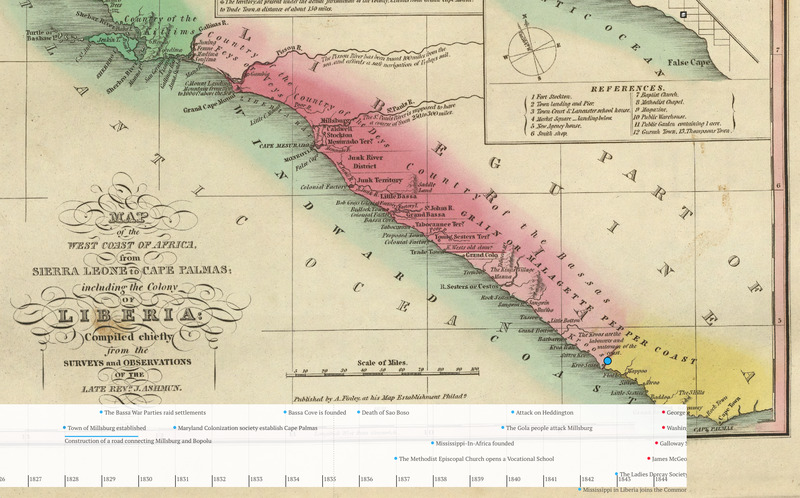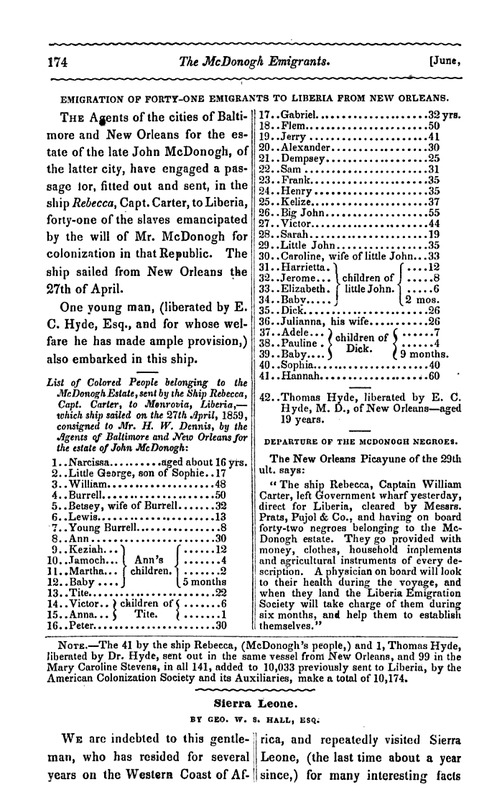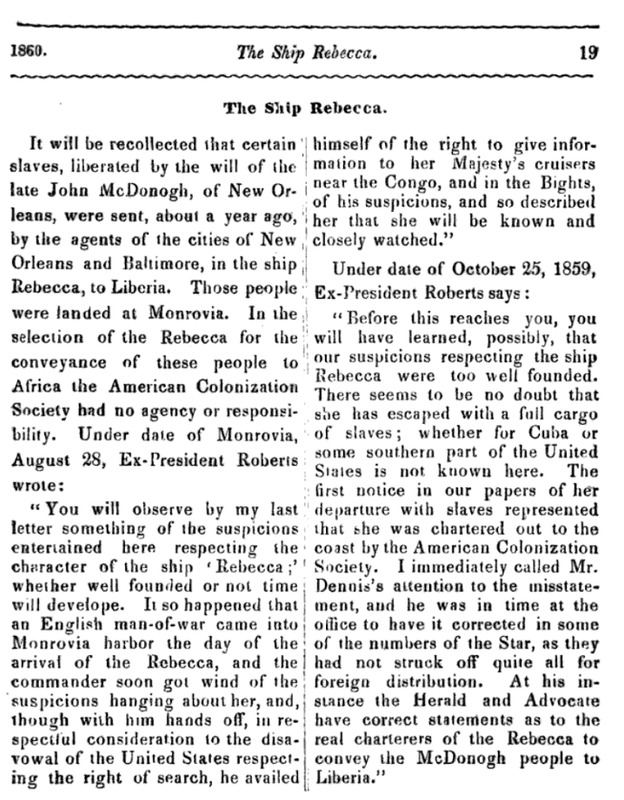Washington's Life in Liberia
Establishment of First Settlement of Emancipated McDonogh Slaves in Liberia
The start of the 19th century marked the fall of several great African Kingdoms and the rise of colonialism. Similar to the rest of Africa, the area now known as Liberia was already home to booming societies and established social networks. The ex-slaves deported to Liberia represented an external force and posed a potential threat to those native to the newly claimed territory. The arrival of the foreigners sparked a territorial battle that threatened the very existence of the new settlement. Simultaneously, illness struck the settlement as spears pronged the borders. As newcomers, their immune systems and medical techniques were not acclimated with the new setting, which saw the new settlement lose a lot of people due to illness alone. For those that weathered the initiation period, a new country, free of slavery, was established. Washington McDonogh played his part in this development by facilitating the operation of a school designed to integrate locals. The results of his work may not have been realized at that moment, but its reverberations were clear.
Our interactive timeline uses details from correspondence between Washington and his neighbors in Liberia, and McDonogh's people back in Louisiana. The timeline shows not only significant events in Washington's life, but also in the history of the Liberian colony.
Second Voyage of Emancipated McDonogh Slaves to Liberia on the Rebecca
On April 27,1859 the final group of emigrants left McDonogh's lands, bound for Liberia. Seventeen years after Washington arrived in Africa with eighty other formerly enslaved people, the Rebecca carried an additional forty-one emigrants. This group was emancipated upon the death of John McDonogh in 1850; his estate was transferred to his executors who oversaw the commissioning of the ship and the safe passage of these emigrants to Liberia.
The document at the left comes from the American Colonization Society records that detail the passengers aboard the Rebecca.
The Ship Rebecca Suspected of Slave Trading
While the arrival of this second group of emigrants marked a significant moment of freedom for them, the same was not true of the Rebecca's next set of passengers. After delivering the emigrants to Liberia, the Rebecca sailed further down the coast and filled its hold with newly enslaved people most likely bound for Cuba or the United States. The transport of slaves was illegal at this point, yet the Rebecca was able to slip past the British authorities who had learned of the ship's destination.
The articles in this exhibit are from the American Colonization Society's papers. The text shows the ACS's desire to distance themselves from the scandal, and reveals how quickly they corrected newspaper reports stating that the ship was commissioned by the ACS, when it was sent by McDonogh's executors.
Though the ACS was unaware of the final destination of this ship at the time, a search of the Trans-Atlantic Slave Trade Database reveals that the Rebecca most likely took on six hundred fiftynewly enslaved people near the Congo River. Five hundred fifty survived the voyage and were taken to Trinidad de Cuba. The fates of these passengers is unknown, yet the duplicitous voyage of the Rebecca, delivering some to freedom while stealing others from their land, shows the relentless violence of slavery.





